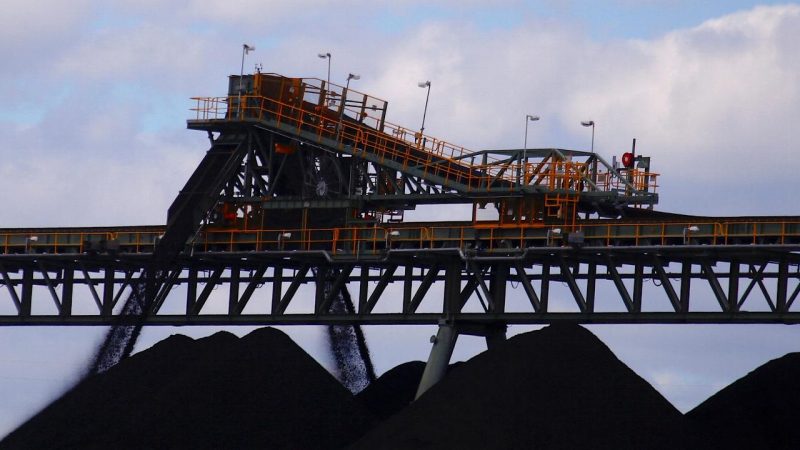- As the energy crisis in China deepened, Australian coal cleared Chinese customs despite an unofficial ban in place for more than a year
- In 2019, Australia exported $4 billion of thermal coal for electricity generation and $9.7 billion of metallurgical/coking coal for steel making to China
- Mine closures in China have placed additional pressure on coal reserves, causing widespread power cuts and manufacturing lags
- The value of Australian coal exports has increased in the last year, supported by rising prices and heightened demand from Japan and South Korea
As the energy crisis in China deepened, Australian coal cleared Chinese customs despite an unofficial ban in place for more than a year.
So does the move signal a broader shift in taught trade relations between the two countries, or rather show just how serious the energy crisis has become?
Australian coal clears customs
In recent months power outages and rationing spread across much of China, and while part of the blame was placed on soaring coal prices, Australian coal sat idling.
Australia exported $4 billion of thermal coal in 2019, used for electricity generation, and $9.7 billion of metallurgical/coking coal for steel making to China.
In mid-2020, both thermal and coking coal were added to the list of goods impacted by simmering trade tensions between Australia and China, with what was described as an “unofficial ban” on all Australian coal imports.
The Export Council of Australia (ECA) confirmed to The Market Herald on Wednesday that some Australian coal warehoused in Chinese ports had cleared customs.
“It may be an opportunity to signal to Chinese authorities our preparedness to discuss a gradual restart.”
ECA statement. October 6, 2021.
While the industry body stopped short of calling it a step-up in relations, the council noted Australian exporters could be well-positioned to support efforts to address the energy crisis as winter approaches.
“We do not believe this is a resumption of normalised trade of Australian coal with China,” the ECA said in a statement. “However, in light of the immediate and significant need by China, it may be an opportunity to signal to Chinese authorities our preparedness to discuss a gradual restart.”
When asked whether the clearances signalled a broader amelioration in trade relations between Australia and China, a Department of Foreign Affairs and Trade (DFAT) spokesperson said customs clearances were privately conducted.
“The clearance of thermal coal of Australian origin through Chinese Customs is managed by China and is conducted through private contractual arrangements,” the DFAT spokesperson said.
In response to a question on how well-positioned Australian producers are, as China looks to stockpile fuel ahead of winter, the spokesperson said “Australia’s coal exporters are competitive and reliable suppliers of high-quality coal to global markets”.
Energy Crisis
Just last week, reports emerged the central government ordered state-owned energy companies to secure energy supplies ahead of winter.
Nearly 30 coal mines across China have been shut due to safety concerns and heavy flooding, at the same time as coal imports from Australia are low, and the government implements measures to reach carbon neutrality by 2060.
Mine closures in the Hebei, Hanan and Shanxi provinces have depleted coal reserves and caused widespread power cuts and manufacturing lags.
S and P Global reported coal imports from Mongolia also froze as COVID-19 cases peaked in September, further squeezing Chinese coal reserves.
Power outages have also become more common. While the price of thermal coal has increased, heavily regulated electricity prices have left producers to digest the heightened production costs.
This year, total coal futures rose 190 per cent on the New York Mercantile Exchange.
On Tuesday coal peaked at A$370.59 per tonne on the Intercontinental Exchange compared to the previous record price of A$177.95 in February 2011.
The combination of factors has placed pressure on manufacturers and energy producers in a country where coal accounted for 57.7 per cent of energy consumption in 2019, according to the Center for Strategic and International Studies China Power Project.
The pivot to new markets
Previously, China had been the second-largest importer of Australian coal. However, at the end of last year, the ECA warned exporters they could be in for a long haul with bilateral relations entering a “new low” and urged them to pivot to new markets.
“We suspect that the relationship has now changed in character for the foreseeable future. We advise Australian exporters to brace for a longer period of contention.”
ECA statement December 2020
Exporters have been mostly successful in this endeavour, the ECA told The Market Herald, with coal shipments increasing to India, Japan and Indonesia.
The total value of Australian coal exports increased by 14 per cent, or $504 million, from June 2020 to June this year, according to the Australian Bureau of Statistics. The increase was supported by a rise in the price of both types of coal, as demand grew in Asia, notably in Japan and South Korea.

